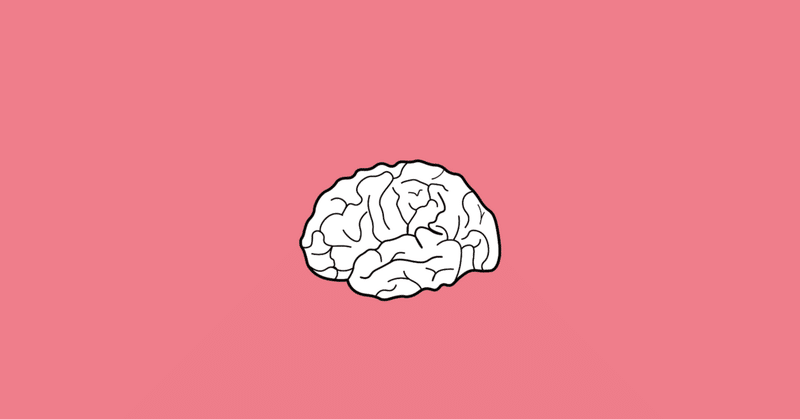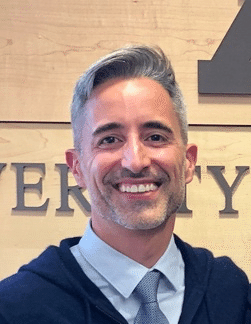
アルツハイマー病研究・新薬開発の多くがパーに、論文詐欺疑い
2025年までに日本全体で700万人が認知症になるであろうと言われています。その中でもアルツハイマー病は68%ほどを占めるそうです(厚労省資料より)。
そのアルツハイマー病の現時点で最有力の原因がアミロイドβというタンパク質で、それが神経細胞に悪さをして、というアミロイド仮説があり、
「アミロイドβを蓄積させない、または除去する治療法を開発しようと、世界中の研究者がしのぎを削って」いるとのこと(こころの病気を知る 認知症より)。
その状況下で、アルツハイマー病研究の元になるアミロイド仮説を打ち立てた論文に詐欺の疑いが出てきたようです。
もしも詐欺であるなら、これまでの多くの研究がパー、薬の開発もパー。診断方法もパー。
アミロイドβを元に「あなたはアルツハイマー病です!」と診断された人たちは別な病気だった可能性もあり、みすみす治るものも治らない、ということも大いにあり得たのかと思います(アミロイドPET。検査料30万円だって…/タウPET)
サイエンス誌に掲載された情報を元にした記事。
保留しつつ、以下に記事を引用いたします。
『20年にわたるアルツハイマー病研究は、数百万人の命を奪った意図的な不正行為に基づいている可能性がある』
原題『Two decades of Alzheimer's research may be based on deliberate fraud that has cost millions of lives』
引用元:Daily Kos(2002年、Markos Moulitsasにより開設。左寄りの思想のブログ。2016年大統領選でヒラリー陣営に寄付をしたりと…)
著者:Mark Sumner(Daily Kosに科学、環境、経済の問題について頻繁に執筆。小説家、地質学者)
2022年7月23日 12:50am JST by Mark Sumner, Daily Kos スタッフ
先月、製薬会社ジェネンテックは、アルツハイマー病患者の脳内で粘着性のプラークを形成するアミロイド蛋白質を標的とする薬、クレネズマブの最初の臨床試験について報告した。この薬は動物モデルで特に有効であったため、ここ数年で最も有望な治療法の一つとして、この試験結果が待ち望まれていた。しかし、効果はなかった。「クレネズマブは、アルツハイマー病の素因を持つ人々の認知機能の低下を遅らせたり、防いだりすることはできなかった」。
Last month, drug company Genentech reported on the first clinical trials of the drug crenezumab, a drug targeting amyloid proteins that form sticky plaques in the brains of Alzheimer’s disease patients. The drug had been particularly effective in animal models, and the trial results were eagerly awaited as one of the most promising treatments in years. It did not work. “Crenezumab did not slow or prevent cognitive decline” in people with a predisposition toward Alzheimer’s.
昨年、食品医薬品局(FDA)は、バイオジェン社の新薬であるアドヘルムの使用を僅差で承認した。同社は非常に高い価格を設定しており、この薬を必要としない人たちまで含めて、アメリカのすべての人々のメディケアの価格を押し上げると予想される。アドヘルムは、脳内に蓄積する「アミロイド斑」と闘う薬として、初めて承認された薬である。1回56,000ドルのこの薬の承認が物議を醸しているのは、プラークを減らすことはできても、実際にアルツハイマー病を遅らせることはできないからである。実際、この治療薬が「臨床的な利点がない」ことを示したため、臨床試験は2019年に中断された。(そのことは、バイオジェンがこの薬の承認を求めたり、天文学的な価格を設定したりすることを妨げなかった)。
Last year, the Food and Drug Administration (FDA) narrowly approved the use of Aduhelm, a new drug from Biogen that the company has priced so highly that it’s expected to drive up the price of Medicare for everyone in America, even those who never need this drug. Aduhelm was the first drug to be approved that fights the accumulation of those "amyloid plaques" in the brain. What makes the approval of the $56,000-a-dose drug so controversial is that while it does decrease plaques, it doesn’t actually slow Alzheimer’s. In fact, clinical trials were suspended in 2019 after the treatment showed “no clinical benefits.” (Which did not keep Biogen from seeking the drug’s approval or pricing it astronomically.)
過去20年間、アルツハイマー病の治療薬は、そのほとんどがヒト試験で99%の確率で失敗していることが注目されてきた。試験管内や動物モデルで有効な薬が、ヒトに使用するとあまり効果がないことは珍しくないが、アルツハイマー病は、他の分野の打率を殿堂入りさせるような記録を持っているのである。
そして今、その理由がよくわかった。というのも、過去16年間のアルツハイマー研究の基礎となるアミロイドプラークモデルを確立した元の論文が、単に間違っているだけでなく、意図的な不正である可能性があるようなのだ。
Over the last two decades, Alzheimer’s drugs have been notable mostly for having a 99% failure rate in human trials. It’s not unusual for drugs that are effective in vitro and in animal models to turn out to be less than successful when used in humans, but Alzheimer’s has a record that makes the batting average in other areas look like Hall of Fame material.
And now we have a good idea of why. Because it looks like the original paper that established the amyloid plaque model as the foundation of Alzheimer’s research over the last 16 years might not just be wrong, but a deliberate fraud.
アルツハイマー病研究のほとんどすべての資金(昨年だけで16億ドル)を得ているこのモデルに何か少なからず問題があるのではないかという疑惑は、シムフィラムという薬をめぐる争いから始まったのである。この薬は製造元のキャッサバ・サイエンス社によって臨床試験が推し進められていたが、シムフィラムに関する製薬会社の主張を検討した科学者のグループは、その可能性を誇張していると考えたのである。そこで彼らは、合理的な人なら誰でもするようなことをした。 キャッサバ・サイエンス社の株を空売りし、FDAにこの薬の臨床試験を行う前に再検討するよう求める書簡を提出し、この立場を裏付ける調査官を雇ったのです。
The suspicion that something was more than a little wrong with the model that is getting almost all Alzheimer’s research funding ($1.6 billion in the last year alone) began with a fight over the drug Simufilam. The drug was being pushed into trials by its manufacturer, Cassava Sciences, but a group of scientists who reviewed the drug maker’s claims about Simufilam believed that it was exaggerating the potential. So they did what any reasonable person would do: They purchased short sell positions in Cassava Sciences stock, filed a letter with the FDA calling for a review before allowing the drug to go to trial, and hired an investigator to provide some support for this position.
サイエンス誌が報じているように、その研究者であるバンダービルト大学の神経科学者兼短大教授のマシュー・シュラグは、カッサバの薬が効かないだけではないことを発見し、リンゴ箱を全部ひっくり返したのである。この16年間、ほとんどの人がアルツハイマーの原因について間違った考えを持っていたことを示す良い証拠がある。詐欺のせいだ。
As Science reports, it was that investigator, Vanderbilt University neuroscientist and junior professor Matthew Schrag, who tipped over the whole applecart to discover that it wasn’t just that Cassava’s drug was ineffective. There’s good evidence that for the last 16 years, almost everyone has had the wrong idea about the cause of Alzheimer’s. Because of a fraud.
2006年、『ネイチャー』は "A specific amyloid-β protein assembly in the brain impairs memory(脳内の特定のアミロイドβタンパク質の集合体が記憶を損なう)”というタイトルの論文を発表した。この論文では、マウスを使った一連の研究により、「中年マウスの記憶障害」は、"Aβ*56 "という可溶性物質の蓄積によって指示されていると結論づけられました。この物質は、アミロイド斑の前駆体である可能性が長い間疑われていた「毒性オリゴマー」と呼ばれる一群の特定の形態であった。 そして、この論文は、脳の老化に影響を及ぼす他の疾患とは別に、この状態を「アルツハイマー病に関連する認知障害」に直接結びつけることにしたのである。
In 2006, Nature published a paper titled “A specific amyloid-β protein assembly in the brain impairs memory.” Using a series of studies in mice, the paper concluded that “memory deficits in middle-aged mice” were directed caused by accumulations of a soluble substance called “Aβ*56.” This was a specific form of a group known as “toxic oligomers” that had long been suspected as the possible precursors of amyloid plaques. The paper then went on to directly connect that condition to “cognitive deficits associated with Alzheimer's disease” independently of other conditions affecting the aging brain.
この研究は突然始まったのではなく、その時点まで何年も前から流れていたアルツハイマー病に関するいくつかの仮説のうちの一つを裏付けるものに過ぎなかったようだ。アルツハイマー病患者の脳には、時に脳の構造を著しく変化させるプラークが存在する。そのプラークにはアミロイドが含まれている。このアミロイドが記憶喪失や認知症の主な原因であることは、さほど大げさなことではありません。アミロイドがプラークを作り、プラークがダメージを与え、そのダメージがアルツハイマーを引き起こすのである。QED
The study didn’t come out of nowhere; it only seemed to confirm one of several hypothesis about Alzheimer’s that had been circulating for many years by that point. After all, the brains of Alzheimer’s patients do contain plaques that can sometimes seriously alter the structure of the brain. Those plaques do contain amyloids. It’s not much of a stretch to suggest those amyloids are a primary cause of the associated memory loss and dementia. Amyloids cause plaques, plaques cause damage, the damage causes Alzheimer's. QED.
この2006年の論文は、主に神経科学のシルヴァン・レスネ教授(写真上)が執筆し、さらに著名な神経科学者であるカレン・アッシュ(写真下)の名前によって重みが加えられている。いずれもミネソタ大学の強固な神経科学研究チームのメンバーである。この研究で使われたトランスジェニックマウスは、純粋にアルツハイマー病のような症状を呈し、その後、一世代の治療法のための好適な動物モデルとして使われるようになったもので、このマウスを作ったのはアッシュである。アッシュは自身のウェブサイトで、Aβ*56を「アルツハイマー病の研究において、脳組織の中で記憶障害を引き起こすことが確認された初めての物質」と呼んでいる。


That 2006 paper was primarily authored by neuroscience professor Sylvain Lesné and given more weight by the name of well-respected neuroscientist Karen Ashe, both from the robust neuroscience research team at the University of Minnesota. It was Ashe who produced the transgenic mice used in the study, which genuinely do appear to have Alzheimer’s-like symptoms and that have since been used as the favored animal models for a generation of treatments. On her website, Ashe called Aβ*56 “the first substance ever identified in brain tissue in Alzheimer’s research that has been shown to cause memory impairment.”
この研究結果は、アミロイドからアルツハイマー病へのパイプラインを、一般読者にもわかるように明快に示しており、アルツハイマー病の研究において、最も影響力のある論文のひとつとなったのである。この論文は何百回と引用されただけでなく、現在治験中の130種類のアルツハイマー病治療薬のうち、およそ100種類が、この論文で取り上げられたアミロイドを直接攻撃するように設計されている。アッシュとレスネの両氏は、2006年の論文をきっかけに、神経科学のロックスターとなり、その波をリードする存在となった。
The results of the study seemed to demonstrate the amyloids-to-Alzheimer’s pipeline with a clarity that even the most casual reader could understand, and it became one of—if not the most—influential papers in all of Alzheimer’s research. Not only has it been cited hundreds of times in other work, roughly 100 out of the 130 Alzheimer’s drugs now working their way through trials are directly designed to attack the kind of amyloids featured in this paper. Both Ashe and Lesné became neuroscience rock stars, the leaders of a wave based on their 2006 paper.
この代表的な研究に戻ってきたシュラッグ氏が興味を持ったのは、その画像であった。論文の中で、記憶の問題とAβ*56の存在との関係を示すはずの画像は、改変されているように見えたのだ。中には、複数の画像をつなぎ合わせたような画像もあった。 シュラッグ氏は、この基礎的な論文が「詐欺」であると実際に非難することは避けたが、「赤信号」を出したことは間違いない。彼はその懸念を、最初は目立たないように、国立衛生研究所(NIH)に直接手紙を送って伝えた。そして、この手紙の返事がなかった時に初めて、シュラッグ氏は自分の疑念を他の人に伝えたのである。
What intrigued Schrag when he came back to this seminal work were the images. Images in the paper that were supposed to show the relationship between memory issues and the presence of Aβ*56 appeared to have been altered. Some of them appeared to have been pieced together from multiple images. Schrag shied away from actually accusing this foundational paper of being a “fraud,” but he definitely raised “red flags.” He raised those concerns, discreetly at first, in a letter sent directly to the National Institutes of Health (NIH). Only when that letter failed to generate a response did Schrag bring his suspicions to others.
その結果、Science社は6ヶ月間にわたる検証を終え、画像の専門家と相談した。その結果、シュラッグ氏の疑惑を裏付けるような結果が得られた。
その結果、レスネの論文にある70枚以上の画像を含む数百枚の画像に疑いの目が向けられ、彼の結論と一致した。ケンタッキー大学のアルツハイマー病専門家であるドナ・ウィルコックによれば、いくつかの画像は「衝撃的なほどあからさまな」改ざんの例であるとのことである。
分子生物学者のエリザベス・ビックは、画像を確認した後、この論文について、"得られた実験結果は望ましい結果ではなかったかもしれないし、そのデータは・・・仮説にうまく合うように変更されたかもしれない "と述べている。
Now Science has concluded its own six-month review, during which it consulted with image experts. What they found seems to confirm Schrag’s suspicions.They concurred with his overall conclusions, which cast doubt on hundreds of images, including more than 70 in Lesné’s papers. Some look like “shockingly blatant” examples of image tampering, says Donna Wilcock, an Alzheimer’s expert at the University of Kentucky.
After reviewing the images, molecular biologist Elisabeth Bik said of the paper, “The obtained experimental results might not have been the desired results, and that data might have been changed to … better fit a hypothesis.”
この不正行為が一見してわかるほど大規模なものであると判明した場合、その意味は、過去20年にわたる数百億円の資金と数百万時間の研究の方向性を誤ったということにとどまるものではありません。2006年の発表以来、この特定のアミロイドの有無がアルツハイマー病の診断材料として扱われることが多くなっている。 つまり、アルツハイマー病で亡くなった患者さんは、他の病気と誤診された可能性があるということです。また、他の原因で認知症になった人も、誤ってアルツハイマーの傘の中に引きずり込まれたかもしれない。 そして、光治療のようなエキゾチックなものであれ、クロスワードパズルをする修道女のような長期にわたるものであれ、あらゆる種類の研究が、最終的には誤った基準で測定された結果であったかもしれないのである。
Should this fraud turn out to be as extensive as it appears at first glance, the implications go well beyond just misdirecting tens of billions in funding and millions of hours of research over the last two decades. Since that 2006 publication, the presence or absence of this specific amyloid has often been treated as diagnostic of Alzheimer’s. Meaning that patients who did die from Alzheimer's may have been misdiagnosed as having something else. Those whose dementia came from other causes may have falsely been dragged under the Alzheimer’s umbrella. And every possible kind of study, whether it's as exotic as light therapy or long-running as nuns doing crossword puzzles, may have ultimately had results that were measured against a false yardstick.
シュラッグ氏が発見した不正の可能性を前にして、世界が一夜にして変わったとは言えない。
シュラッグ氏がNIHに懸念を表明してから4ヵ月後、NIHは一転してレスネに5年間の研究助成金を与えたのである。その助成金を与えたのは、NIHの国立老化研究所のプログラム・ディレクターであるオースティン・ヤン(写真)だ。ヤンは、2006年の論文の共著者の一人でもある。

In the face of the potential fraud unearthed by Schrag, it’s not as if the world has changed overnight.
Four months after Schrag submitted his concerns to the NIH, the NIH turned around and awarded Lesné a five-year grant to study … Alzheimer’s. That grant was awarded by Austin Yang, program director at the NIH’s National Institute on Aging. Yang also happens to be another of the co-authors on the 2006 paper.
サイエンス誌は、画像の解析で行われた作業について丁寧に説明している。ハーバード大学の2008年の論文を含む他の研究者は、Aβ*56は不安定であり、ヒトの組織にはこの物質の痕跡がないようで、標的化は文字通り無意味に等しいと指摘している。しかし、レスネは、脳細胞内のAβ*56やその他のオリゴマーを測定する方法があると主張し、一連の追加論文の基礎となったが、現在ではすべて疑問視されている。
Science has carefully detailed the work done in the analysis of the images. Other researchers, including a 2008 paper from Harvard, have noted that Aβ*56 is unstable and there seems to be no sign of this substance in human tissues, making its targeting literally worse than useless. However, Lesné claims to have a method for measuring Aβ*56 and other oligomers in brain cells that has served as the basis of a series of additional papers, all of which are now in doubt.
オリゴマーが認知障害に関与していることは間違いないようだ。しかし、その役割は、2006年の論文やその後のレスネの論文で示唆されたほど直接的ではなく、また重要でもないかもしれない。Aβ*56という特定のオリゴマーは、アッシュのトランスジェニックマウス以外には存在しない可能性もあるのだ。
そして、過去16年間、アルツハイマー病に関するほとんどの研究、および臨床試験に入っているほとんどの新薬は、せいぜいその結果をよりよく見せるために修正した論文に基づいている可能性が高いように思われる。
There seems to be no doubt that oligomers may play a role in cognitive impairment. However, that role may not be nearly as direct, or as significant, as the 2006 paper and subsequent papers by Lesné have suggested. It’s quite possible that the specific oligomer Aβ*56 may not even exist outside of Ashe’s transgenic mice.
And it seems highly likely that for the last 16 years, most research on Alzheimer’s and most new drugs entering trials have been based on a paper that, at best, modified the results of its findings to make them appear more
この記事が気に入ったらサポートをしてみませんか?
